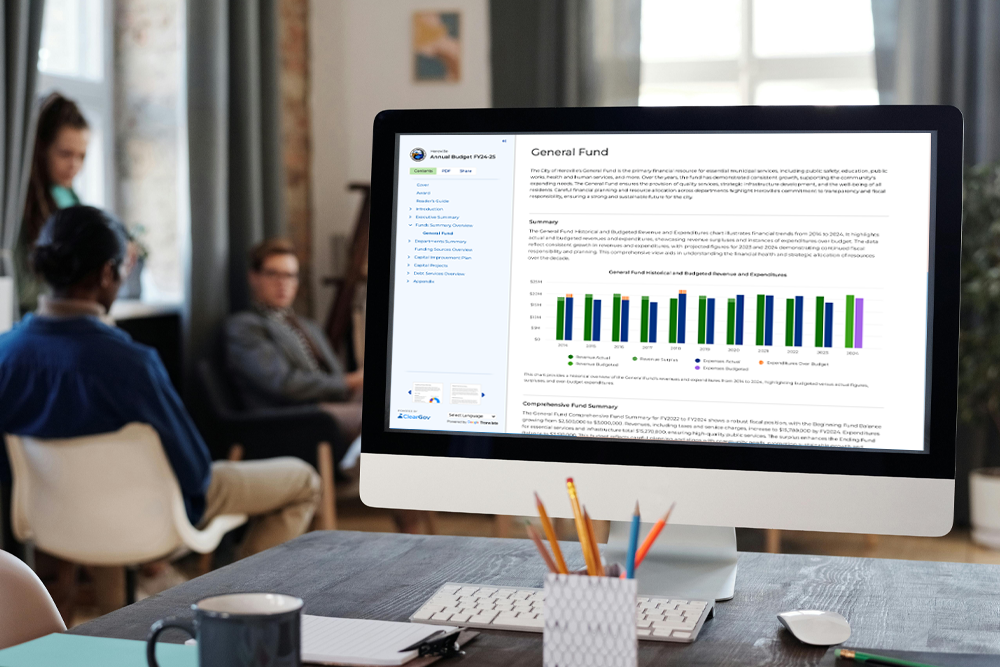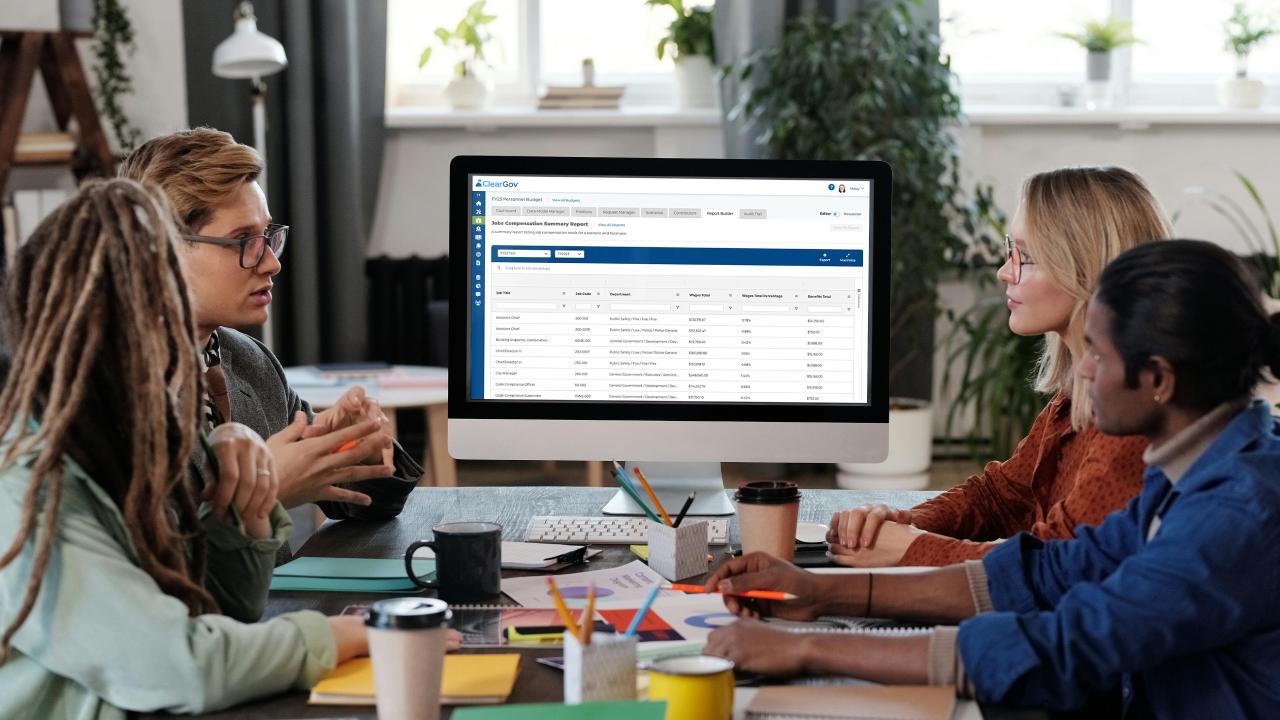How To Choose The Right Budgeting Tool For Your School District Like other public agencies, many school districts have traditionally relied on legacy systems, like Excel spreadsheets and email, to create their annual budget. But they’re also increasingly recognizing the limitations of these traditional budgeting methods. Static, one-size-fits-all systems are giving way to dynamic, collaborative processes using modern, cloud-based software that’s better suited to navigating the complexities of school budgeting. The challenge lies in selecting the right budgeting tool that can accommodate the unique needs of a school district. Here are some tips for making that choice with confidence. The Challenges Schools FaceFrom inconsistent funding sources to aligning expenses with educational goals, school districts have a big job when it comes to responsibly allocating tax dollars. Traditional budgeting methods often fall short in providing the flexibility and transparency school districts need. In addition to the obvious limitations, like the excessive time spent manually collecting requests, consolidating spreadsheets, and reconciling to check for human errors, these methods are not collaborative. For instance, in a top-down approach where guidance comes from the school board’s finance team, individual schools may feel restricted or misunderstood. When given more control over their school’s budget in a bottom-up approach, they may miss the mark when it comes to aligning with the district’s strategic vision and goals. There’s only so much that can be communicated with spreadsheets, and the extra time spent on manual processes means less time for true collaboration and strategic planning. Modern Solutions To The RescueModern, cloud-based budgeting tools offer a solution to both sides of this problem. They save school districts countless hours by eliminating manual processes while improving collaboration with features like real-time updates, intelligent forecasting, and website-based budget presentations that provide the transparency parents and taxpayers expect. How To Select The Right ToolIf your school district is ready to ditch Excel, here are some considerations for choosing a modern budgeting solution. Integration With Accounting Software Or ERPContrary to popular belief that your financial tech stack should be integrated, a separate budgeting system actually makes a lot of sense when you think about it. ERP upgrades are a fact of life, which means integration migrations are, too. ClearGov’s budgeting solution is different from other tools in that it is purposely designed to work independently of any ERP system. This independence is not just a design choice; it’s a strategic advantage that ensures your budgeting process remains unaffected by any changes in your ERP system. ClearGov’s approach means that when your school district decides it’s time to upgrade your ERP system—whether for growth, compliance, or support reasons—the transition will have zero impact on your budgeting software. This seamless compatibility with any ERP system, without the need for direct integration, eliminates one of the major headaches often associated with ERP upgrades. Flexibility And ScalabilityChoose a budgeting tool that allows you to remain flexible while growing with you as your district or programs expand. A flexible budgeting solution allows for the adjustment of financial plans in real-time, accommodating unexpected changes in funding, enrollment numbers, or legislative requirements. It allows school districts to respond quickly to unforeseen expenses or opportunities, such as sudden infrastructure repairs or the availability of new grant funding. This is particularly important for schools, since as much as 85% of their funding is tied to personnel salary and benefits. Managing staff turnover and teacher union negotiations alongside varying funding sources and enrollment means schools must remain flexible in their budgeting strategy. Similarly, a scalable budgeting solution grows with your district without the need for system upgrades or replacement. This means that as your district expands its offerings, whether through the addition of new schools, new educational programs, or the expansion of extracurricular activities, the budgeting tool remains capable and efficient. User-FriendlinessA budgeting tool that is accessible to both financial and non-financial staff will encourage widespread adoption and use. The hallmark of a user-friendly budgeting tool is an intuitive design that guides users through the system with minimal training. An interface that is clear, straightforward, and visually engaging can demystify financial planning for non-experts and make it easier for them to participate in the budgeting process. Beyond an intuitive interface, easy-to-use training materials and a responsive customer support team greatly contributes to the user-friendliness of any software. Video tutorials, step-by-step guides, FAQs, and dedicated customer support ensure that users can quickly learn how to use the tool. ClearGov was built specifically to be easy to use for anyone, regardless of skill and experience. In addition to our speedy and efficient onboarding, ClearGov clients have a dedicated customer success manager and unlimited support. Our 2023 CSAT (Customer Satisfaction) scores reflect that, with 98% of clients being pleased with the onboarding process, and 90% with support. For perspective, most B2B software vendors’ CSAT scores are around 77%. Collaborative FunctionalityThe manual nature of emails and spreadsheets is not only a time suck but also a major barrier to collaboration. The ideal budgeting tool allows stakeholders from different departments and roles to work together in real-time. This means updates, changes, and comments can be viewed and addressed instantly by anyone with access to eliminate delays and ensure that all parties are always working with the most current information. It should also offer customizable permissions to engage the right stakeholders while protecting sensitive data. Another feature to look for is a centralized communication hub that facilitates real-time collaboration with visually engaging dashboards, note-sharing, automatic audit trails, and a notification system to keep budget-related tasks on track. This eliminates the need for disparate email threads or external messaging platforms and keeps all communication organized and easily accessible. Cost-EffectivenessSchool districts are already working with limited resources, so it can be hard to justify the cost of new technology. However, it’s important to consider not only the immediate financial impact, but also the long-term return on investment, especially in opportunity costs. Long-term savings are seen by automating processes, minimizing errors, and reducing the need for additional resources. When you pull people off of manual, tedious processes, they can spend more time on strategic planning and helping the district achieve its goals. When comparison shopping, it’s important to consider not only the upfront cost of the system, but also any additional fees and cost for support. A good budgeting software vendor practices what they preach when it comes to transparency by offering clear, straightforward pricing. ClearGov Is The Clear Choice For School District BudgetingThe right tool is crucial for school districts looking to modernize their budgeting process. ClearGov stands out as the clear choice for schools through our user-friendly interface, collaborative functionality, and strategic independence from ERP systems. Our commitment to flexibility, scalability, and cost-effectiveness ensures that districts of all sizes can benefit from a modern budgeting system that grows with them. Ready to see what ClearGov can do for your school district? Schedule a demo and see how ClearGov can transform your budgeting process and empower your district to plan for the future with confidence and clarity. |












